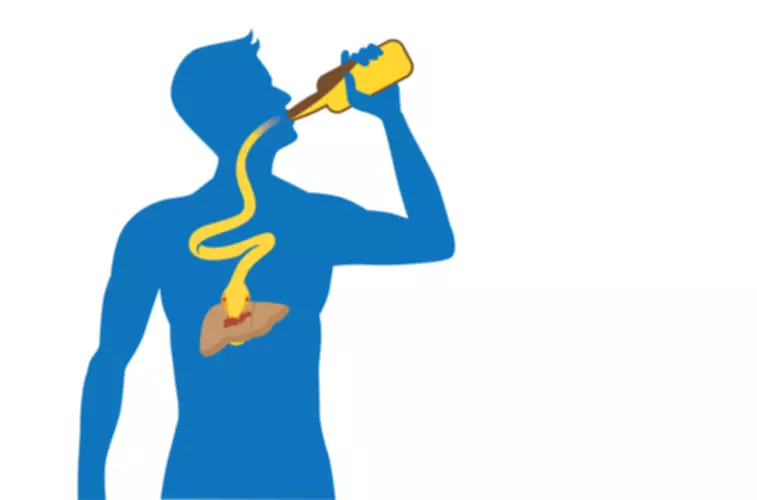What Is a Halfway House? Learn How Halfway Houses Can Help

Visitation policies vary per halfway house, so it is advisable to call ahead and inquire about their restrictions before making a visit to a loved one. Paying a visit to loved ones to offer them words of encouragement is a great way for families and friends to show them care and concern. Doing so can help track the resident’s recovery progress by checking in with the house manager or on-site counselors. In this article, we’ll go through the different halfway house rules and regulations. Not all halfway houses have the same policy on smoking, vaping, or other tobacco products.
Court-Ordered Halfway Houses
As they became further integrated with the formal correctional system, eventually becoming the whats a half way house primary prerelease opportunities for inmates, these programs were often characterized as “halfway out of prison” programs. Halfway houses are dorm-style living spaces owned by a government or private agency. They can also be more crowded than sober living homes and offer fewer amenities.
Halfway Houses: What Is a Halfway House?
Unlike halfway houses or sober living homes, drug rehab provides active, on-site treatment for substance use disorders from the earliest stages of addiction treatment. Residential programs designed to provide transitional services and assistance have existed in the United States since the beginning of the 19th century. Individuals battling substance abuse need an opportunity to detox as well as intense residential care in many situations. Our team at FHE Health can help you or your loved one to obtain that care.
- Level 2 residences are characterized by a community-based environment supervised by a senior resident, house manager, or staff member.
- The cost varies by the type of sober-living environment and length of stay.
- The benefits of halfway houses extend beyond staying sober; they help you thrive into an independent and purposeful existence, confidently reintegrating into society.
Sober Living Halfway Houses 1-888-737-0761
Punishment applied with certainty, swiftness, and proportionate severity, it was believed, would deter offenders from further criminal activities. Whether you’re ready or not, you may be required to move out after several months. People who have detoxed and spent some time sober are most likely to succeed in this environment. If you’re seeking help for yourself or a loved one, our expert team is here to guide you every step of the way. The residence itself can be quite varied, from an individual dwelling to apartments or townhomes, and even large dorm-like structures. Length of stay varies and is open-ended, generally from 90 days to several years.

If you or a loved one are struggling with addiction or mental health disorders, call and speak with a member of our team today. In Canada, halfway houses are often called Community-Based Residential Facilities.8 The Correctional Service of Canada definition of a halfway house is similar to the general American definition of one. At the start of the 21st century, correctional populations reached record levels and were continuing to increase, and institutional overcrowding became epidemic in some jurisdictions. Halfway houses, like other recovery and sober-living houses, are intended to gently reintroduce tenants back into society, free from the pressures and triggers of a potentially dangerous home environment. Halfway houses are very similar to other sober-living residences, and it's no surprise that people often confuse them. Sober living homes vary in cost from inexpensive ($100-$300/month) to expensive (over $2,000/month), but many are in the range of $400 to $800 per month depending on where you live.
Level 4: Service Provider Recovery Residence
The provided residential services span from peer-based community models (found in all recovery residences) to medical and counseling services in recovery residences offering higher levels of support. The level titles and descriptions are designed to be simple, https://ecosoberhouse.com/ descriptive, and intuitive. Higher residential levels describe higher levels of service and structure.

Group home listed as halfway house, homeowner sets record straight

In a halfway house in New Jersey, around 5,100 convicts have escaped the state’s privately operated facility since 2005. With this report, the federal government has been working on improving its oversight mechanisms and comprehensive adjustments to keep residents safe. Staff may assist residents in getting a steady job through a network of local employers, private companies, local job fairs, and training seminars in resume writing and interview techniques. The use of telephones and cell phones in a halfway house is stipulated in the rules of all facilities with phone service.

Level 1: Peer Run Recovery Residence
Consequently, according to the theory, amelioration of crime and recidivism requires that the individual, neighborhood, community, and all of society be responsible for and involved in the reintegration of offenders. A halfway house is a living facility where people go as a part of their drug rehab aftercare. Cases of COVID-19 are uniquely dangerous in halfway houses due to the work release component of many facilities. Furthermore, halfway houses for recovering addicts often incorporate evidence-based practices and holistic approaches to address the underlying causes of addiction.
- Some people may also go to halfway houses without it being required, simply because the facility provides housing.
- Swift action is crucial to addressing these challenges, improving public health, and achieving remission from opioid and other substance dependencies.
- Halfway houses are transitional living spaces for sober individuals who have either completed an addiction treatment program or finished serving time in prison.
Support Groups
The benefits of structure in these environments, such as regular schedules and supportive programs, can significantly aid residents in building a stable and productive life post-incarceration. As well as serving as a residence, halfway houses provide social, medical, psychiatric, educational, and other similar services. They are termed "halfway houses" due to their being halfway between completely independent living and in-patient or carceral facilities, where residents are highly restricted in their behavior and freedoms. By the 1980s, independent of the early (pre-parole) release or postrelease (parole) function of the halfway house, they remained community-based residential programs that provided structure and services to offenders.
Is Alcoholism Hereditary? What the Research Shows

The lineage of each of its 302 neurons and their chemical synapses has been characterized. Nematodes have a short (approximately 3 days) reproductive cycle, enabling large-scale mutagenesis screens within a relatively short time, and they can be cryopreserved. Too much alcohol affects your speech, muscle coordination and vital centers of your brain. This is of particular concern when you're taking certain medications that also depress the brain's function. Unhealthy alcohol use includes any alcohol use that puts your health or safety at risk or causes other alcohol-related problems. It also includes binge drinking — a pattern of drinking where a male has five or more drinks within two hours or a female has at least four drinks within two hours.
Genetics and alcoholism

The Diagnostic and Statistical Manual of Mental Disorders (DSM-5) provides eleven criteria, of which at least two must be present over twelve months for an alcoholism diagnosis. Most clinicians use the term “alcohol use disorder” to help emphasize the disease value of the disorder and reduce inhibitions to seek medical help. In a twin study, researchers found that twins adopted by families with drinking problems were slightly more likely to abuse the substance themselves. However, the chance of alcoholism was much higher if the twins’ biological father suffered from it, whether alcohol was present in the adoptive families or not.
Nebula Genomics DNA Report for Alcoholism
- People with these conditions often turn to alcohol as a way of self-medicating to cope with their symptoms.
- Ethanol is converted to acetaldehyde by alcohol dehydrogenase (ADH) and subsequently to acetate by aldehyde dehydrogenase (ALDH).
- People with mental illness have a higher risk of turning to substance abuse as a way of coping.
- There are multiple ADH and ALDH enzymes that are encoded by different genes (Tables 1 and 3).
- Some of these genes have been identified, including twogenes of alcohol metabolism, ADH1B and ALDH2,that have the strongest known affects on risk for alcoholism.
Abundant evidence indicates thatalcoholism is a complex genetic disease, with variations in a large number ofgenes affecting risk. Some of these genes have been identified, including twogenes of alcohol metabolism, ADH1B and ALDH2,that have the strongest known affects on risk for alcoholism. Studies arerevealing other genes in which variants impact risk for alcoholism or relatedtraits, including GABRA2, CHRM2,KCNJ6, and AUTS2.
Genome-wide Association Studies
The previous COGA studies have provided critical information to better understand the genetic and biological underpinnings of AUD. However, there is a need for a framework to unify the findings and provide the data to the community for additional analysis and discovery. The initiative will facilitate identification of therapeutic targets and development of prevention strategies for AUD, supported by data generation, curation and bioinformatic analyses. The environment for data sharing has changed dramatically in the past 5 years.
Like many other complex traits, alcoholism appears to be clinically and etiologicaly hetrogenous13. This implies that there might be several steps and intermediate conditions in the development of AUD. Information about the underlying genetic factors that influence risk to AUD can be derived from multiple levels of AUD including amounts of drinks (Alcohol consumption), severity and symptoms of alcohol abuse and dependence.

Lookup of meta-analysis DEGs in summary statistics of other brain regions
- The coding sequences, which are those parts of the gene that actually serve as templates for protein production, are called exons.
- Living in a household where you’re regularly exposed to parental alcohol use can also increase your chances of AUD, regardless of your genetic predisposition.
- Abundant evidence indicates thatalcoholism is a complex genetic disease, with variations in a large number ofgenes affecting risk.
- Drug use and addiction represent a public health crisis, characterized by high social, emotional, and financial costs to families, communities, and society.
There are several other genes that have been shown to contribute to the riskof alcohol dependence as well as key endophenotypes. The earliest genes weretypically identified as a result of family-based analyses. In most cases, studiesrecruited families having multiple members with alcohol dependence; such familiesare likely to segregate variants that affect the risk of alcohol dependence. Themost common initial approach was linkage analysis, in which markers throughout thegenome were measured to identify chromosomal regions that appeared to segregate withdisease across many families. The drawback to this approach https://ecosoberhouse.com/ isthat linkage studies find broad regions of the genome, often containing manyhundreds of genes. In many cases, the initial linkage studies were followed by moredetailed genetic analyses employing single nucleotide polymorphisms (SNPs) that weregenotyped at high density across the linked regions.
The genetic basis of alcoholism: multiple phenotypes, many genes, complex networks
Future analyses of splice variation in the LIBD samples and subsequent meta-analyses with NSW-TRC results may further improve understanding of the relationships between AUD and transcription in the brain. Only genes tested for DGE across all datasets were considered for meta-analysis. Genes that had discordant fold changes between datasets were removed after significance calling to increase cross-dataset consistency and robustness.
Do Genetics Affect Alcohol Use?

In the future, there may be genetic therapies that help people control how much alcohol they consume; for now, behavioral therapies have proven very effective at managing these chronic health conditions. Prevention and education programs can address this risk as part of regular medical checkups. Children of addicted parents are more likely to become addicted than other children. Physical, psychological, and sexual violence combined with addiction in the family of origin are significant risk factors. Physically, doctors have seen adolescents with a family history of alcoholism to have a smaller amygdala (emotional center in the brain) that may affect substance-based cravings.
- Illumina TruSeq Total RNA Stranded RiboZero Gold (Illumina Inc, San Diego, CA) was used for library prep.
- Another gene with overlapping support from both DGE and GWAS was GBA2, which is targeted by miglustat and used for treatment of Gaucher’s Disease 65.
- When the person drinks alcohol, for example, they may feel relaxed and happy compared to the stress they feel when they are sober.
- As more variants are analysed and studies are combined for meta-analysis to achieve increased sample sizes, an improved picture of the many genes and pathways that affect the risk of alcoholism will be possible.
Alcohol use disorder can include periods of being drunk (alcohol intoxication) and symptoms of withdrawal. The Diagnostic and Statistical Manual of Mental Disorders, 5th is alcoholism inherited edition, text revision (DSM-5-TR), a clinical diagnostic guidebook, indicates that AUD often runs in families at a rate of 3–4 times higher compared with the general population. Many factors are involved in the development of AUD, but having a relative, or relatives, living with AUD may account for almost one-half of your individual risk. According to the 2021 National Survey on Drug Use and Health, AUD affects approximately 29.5 million people in the United States. More than 800,000 of the people affected are children between the ages of 12 and 17 years.

A 2008 study conducted by the National Institute on Alcohol Abuse and Alcoholism (NIAAA) (a section of the National Institutes of Health) reviewed much of the research on this condition and genetics. The study concluded that genetic factors account for percent of the variance among people who have a problem with alcoholism. Since then, scientists have identified some specific genes that contribute to a genetic predisposition to alcohol abuse. Among those abusing alcohol, people who are genetically predisposed to alcoholism have a higher risk of developing an alcohol use disorder.
Hangovers National Institute on Alcohol Abuse and Alcoholism NIAAA

A difference in a gene that affects the way the body breaks down alcohol may make some people flush, sweat or become ill after drinking even a small amount of alcohol. Hangovers after a single night's drinking go away on their own. Talk with your healthcare professional if you're concerned that frequent heavy drinking may lead to serious problems, such as alcohol withdrawal. However unpleasant, most hangovers go away on their own, though they can last up to 24 hours. If you choose to drink alcohol, doing so responsibly can help you stay away from hangovers. There’s evidence that reduced sleep after drinking leads to more severe hangovers.

Take pain relievers
- A hangover is when you have unpleasant physical and mental symptoms after drinking too much alcohol the previous night.
- The researchers concluded that 25% to 30% of people who drink may be resistant to hangovers.
- A difference in a gene that affects the way the body breaks down alcohol may make some people flush, sweat or become ill after drinking even a small amount of alcohol.
- Some hangovers, known as a two-day hangover, last anywhere from 48 to 72 hours.
- Often, intravenous (IV) fluids can help alleviate the symptoms.
- A good rule of them is that the lighter the spirit is, the fewer congeners it has.
If you must drink, it’s best to limit your alcohol intake. Treatment options are also available for those suffering from alcohol addiction. According to a recent study, a person with type 1 diabetes will likely experience hypoglycemia after drinking alcohol.9 Hypoglycemia is a dangerous condition characterized by low blood sugar levels. Other things you do -- or don't do -- when you drink alcohol can affect whether you get a hangover and how bad it is.
- Take these medications with a meal to avoid stomach irritation or further harming your stressed liver.
- Any time people drink to intoxication, there is a chance they could have a hangover the next day.
- However, the progression and severity of symptoms over time can vary from one person to the next.
Drinking on an empty stomach

As we get older, our body’s ability to process toxins slows down. As a result, you might be down for the count on less alcohol (and for longer) than before. The more dehydrated you are, the worse you’ll feel, and longer. There are several factors that influence how long a hangover lasts and how bad you feel.
- The effects usually begin hours after drinking alcohol and can last for a whole morning or even for several days.
- A hangover is unpleasant, but symptoms tend to go away within a day or so.
- Rehydrating with fluids, most importantly water, and taking an over-the-counter pain medication like acetaminophen (Tylenol) or ibuprofen (Advil) will help with your symptoms.
- Hangover symptoms range from a mild headache to nausea and vomiting.
- But some people are more likely to have hangovers than others are.
On Call: Dick Wolf’s Prime Video Police Drama Adds Lori Loughlin and Eriq La Salle — Get Release Date, First Photos
As a result, you’re more likely to throw up and have your hangover linger for a longer period. Believe it or not, how many drinks you have doesn’t appear have a significant impact on how long a hangover lasts, according to a 2017 study. Fortunately, hangovers typically go away within 24 hours. There are some reports online of them lasting for up to 3 days, but we can’t find much evidence to back this up. You may have heard that sports drinks will hydrate you faster and speed your hangover recovery. But there’s no research to back up the idea that electrolytes -- whether you drink them or take them in through a vein in your arm -- are a cure.
The effects usually begin hours after drinking alcohol and can last for a whole morning or even for several days. Similarly, if your blood sugar is low, you're more likely to feel the effects of drinking alcohol. One of the main components of alcoholic drinks is sugar, used in the fermentation process to turn ethanol into beer, how long does a hangover last wine, or spirits. A hangover is unpleasant, but symptoms tend to go away within a day or so. If you drank too much alcohol and feel sick, try at-home hangover remedies like drinking plenty of water, eating some carbs and sleeping.

